The Voortrekker Monument is located just south of Pretoria in South Africa. This massive granite structure is prominently located on a hilltop, and was raised to commemorate the Voortrekkers who left the Cape Colony between 1835 and 1854.
 On 8 July 2011 the Voortrekker Monument, designed by the architect Gerard Moerdijk, was declared a National Heritage Site by the South African Heritage Resource Agency.
On 8 July 2011 the Voortrekker Monument, designed by the architect Gerard Moerdijk, was declared a National Heritage Site by the South African Heritage Resource Agency.

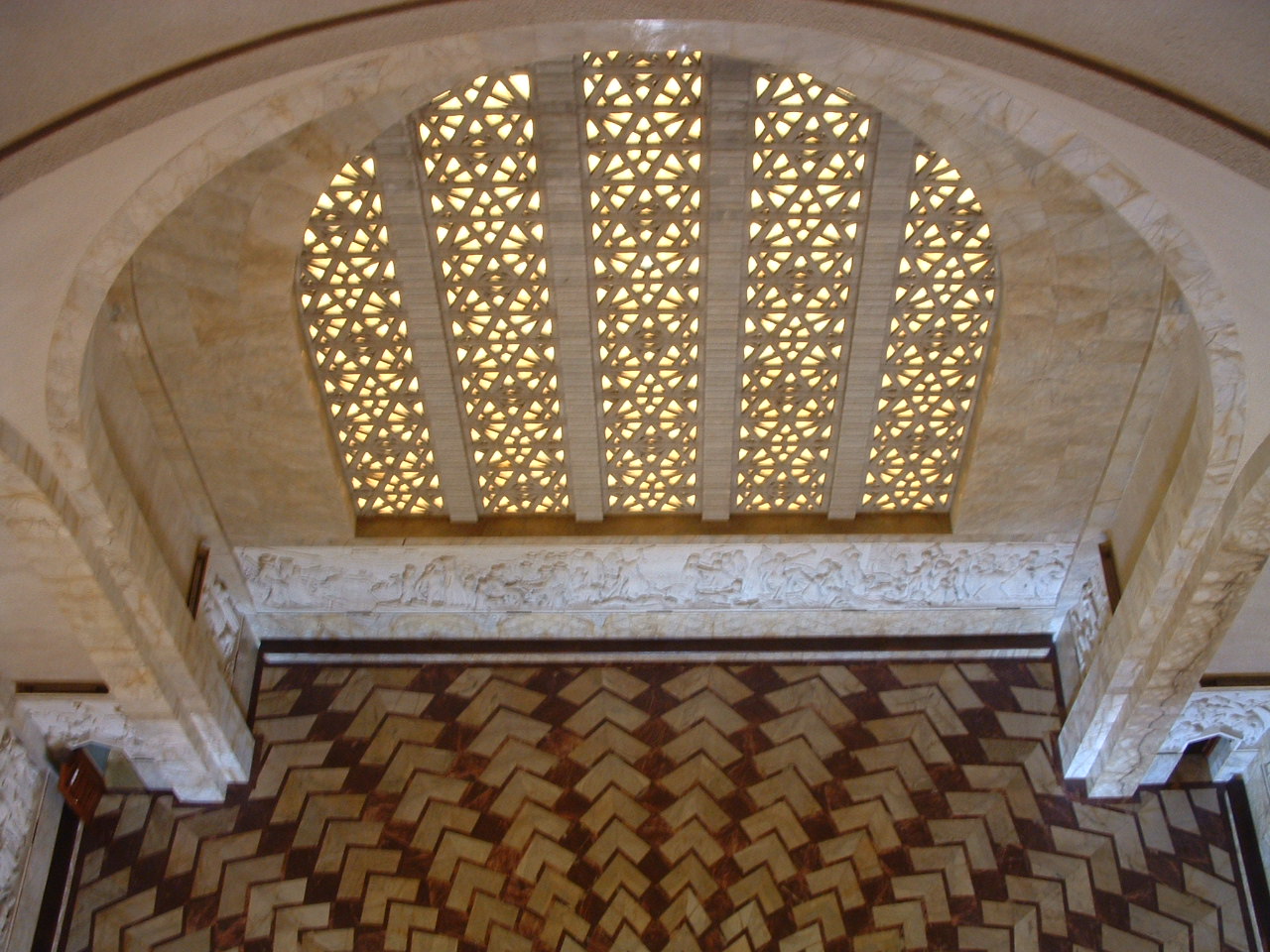
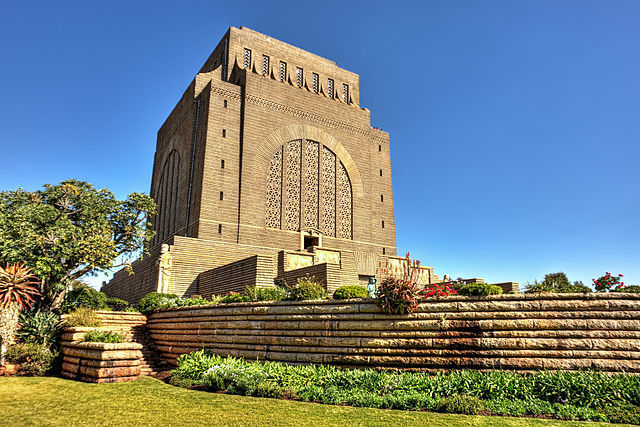
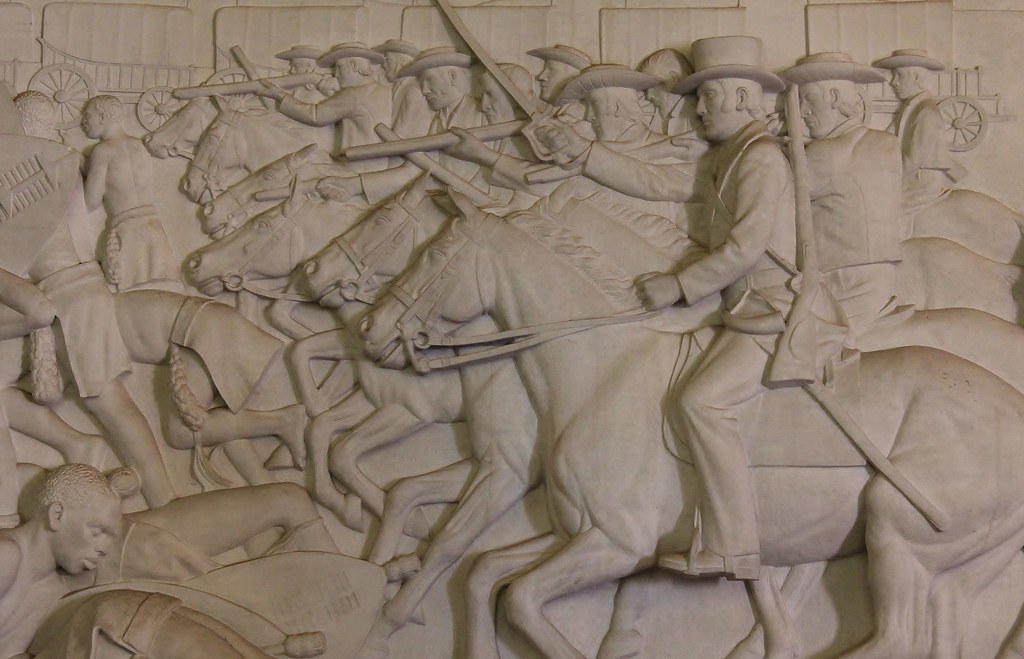 The Voortrekker Monument is 40 metres high, with a base of 40 metres by 40 metres. The building shares architectural resemblance with European monuments such the Dôme des Invalides in France and the Völkerschlachtdenkmal in Germany but also contains African influences. The two main points of interest inside the building are the Historical Frieze and the Cenotaph.
The Voortrekker Monument is 40 metres high, with a base of 40 metres by 40 metres. The building shares architectural resemblance with European monuments such the Dôme des Invalides in France and the Völkerschlachtdenkmal in Germany but also contains African influences. The two main points of interest inside the building are the Historical Frieze and the Cenotaph.
 The main entrance of the building leads into the domed Hall of Heroes. This massive space, flanked by four huge arched windows made from yellow Belgian glass, contains the unique marble Historical Frieze which is an intrinsic part of the design of the monument. It is the biggest marble frieze in the world.
The main entrance of the building leads into the domed Hall of Heroes. This massive space, flanked by four huge arched windows made from yellow Belgian glass, contains the unique marble Historical Frieze which is an intrinsic part of the design of the monument. It is the biggest marble frieze in the world.
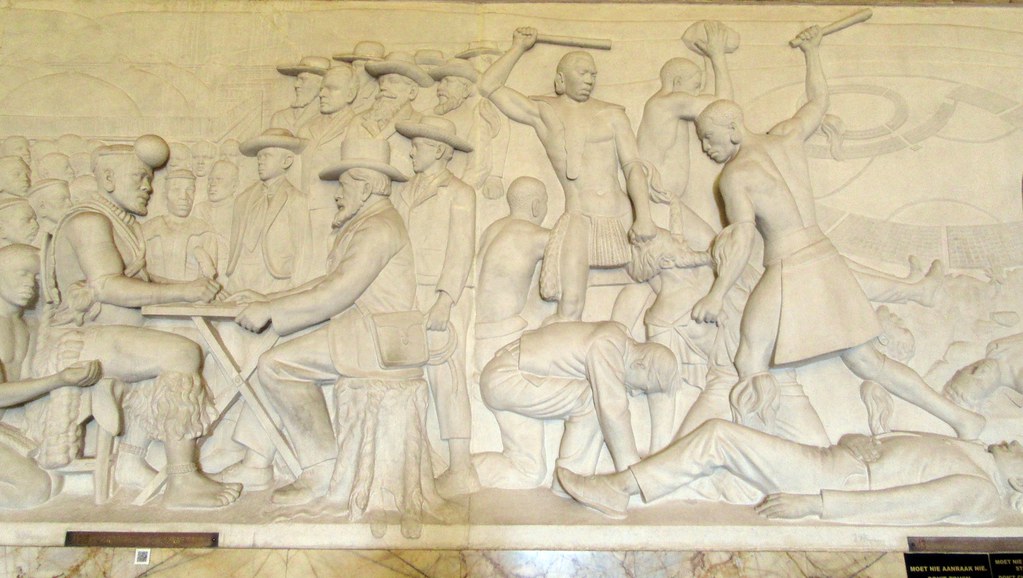 The frieze consists of 27 bas-relief panels depicting the history of the Great Trek, but incorporating references to every day life, work methods and religious beliefs of the Voortrekkers.
The frieze consists of 27 bas-relief panels depicting the history of the Great Trek, but incorporating references to every day life, work methods and religious beliefs of the Voortrekkers.
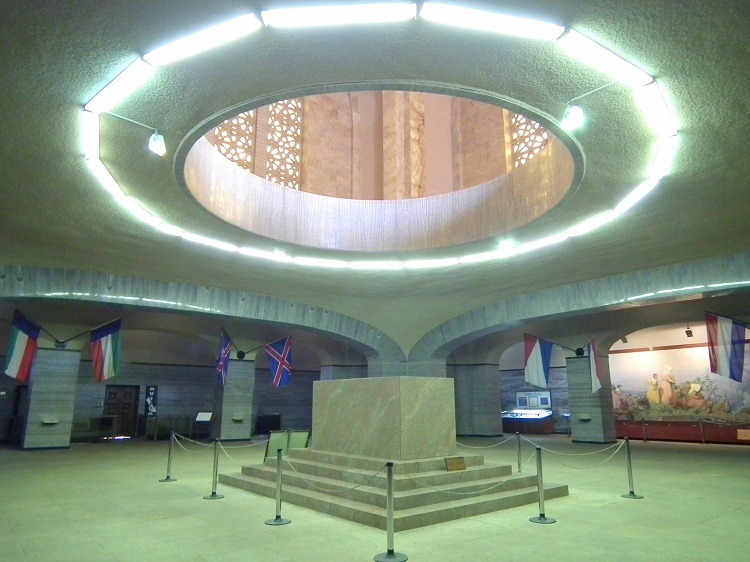 The set of panels illustrates key historical scenes starting from the first voortrekkers of 1835, up to the signing of the Sand River Convention in 1852. In the centre of the floor of the Hall of Heroes is a large circular opening through which the Cenotaph in the Cenotaph Hall can be viewed.
The set of panels illustrates key historical scenes starting from the first voortrekkers of 1835, up to the signing of the Sand River Convention in 1852. In the centre of the floor of the Hall of Heroes is a large circular opening through which the Cenotaph in the Cenotaph Hall can be viewed.














